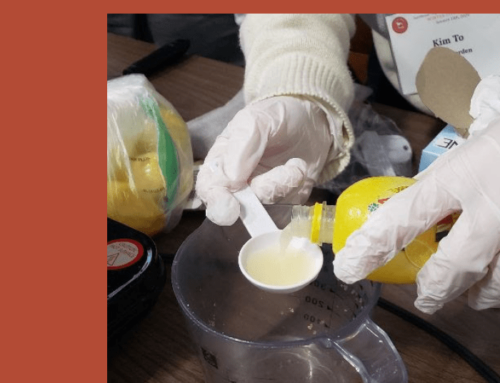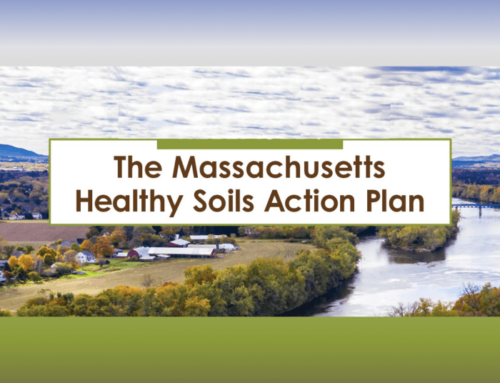By Richard Robinson, Farmer at Hopestill Farm, Sherborn MA

One of the central tenets of no-till organic gardening and farming is to never leave soil bare, especially through the winter. Planting a cover crop at the end of the season is one way to do that, but it can be challenging in the fall to get a good crop started before the cold weather sets in, and challenging again in the spring while you wait for it to size up before planting your main crop.
On my farm, I address these challenges by mostly avoiding seeded cover crops, and instead applying lots of what I call “nature’s cover crop”: leaves, and lots of ‘em. I aim to put about 4” of leaves on all my garden beds beginning as soon as I can get them, usually late October through November.
Worms love leaves and the soil environment that they provide, and the worms do most of the work of breaking them down over time, leaving me with a rich, loose, fertile soil the following spring, still covered with a nice layer of mulch. At planting time I usually rake the leaves on the beds into the paths, allowing the soil to warm quickly, and then add it back by the handful or forkful as the season progresses. Unlike hay mulch, you won’t get stray weed seeds in your leaf mulch, except maybe an acorn or two.
If you live in the suburbs or nearby, you are likely to be able to get your leaves from landscapers, delivered for free, since they are likely to have to pay to dump them elsewhere. Calls made now will get you in line for all the leaves you’ll need (but be sure to call again as the season comes closer, to remind your supplier). Deliveries here usually begin in November and continue through mid-December. I emphasize with my suppliers that I can’t take any grass clippings or garden waste, which are more likely to contain chemicals or weeds I don’t want. Landscapers typically deliver a full truckload of chopped leaves—about 8 to 10 yards. They will need easy access across firm ground to your stockpiling site.
If your neighbors bag leaves for town pick-up, you can make the rounds before the town trucks and take home as much as you can carry. This can be very handy for small-to-medium quantities. Again, avoid grass clippings and garden waste. You can find the pick-up schedule at Town Hall.
As for types of leaves, almost anything will make a nice mulch. Maple and oak are the most common in yards around here, along with pines, and I take them all. I avoid black walnut leaves (though I have a lot in my yard), because of possible growth inhibition, and Chinese and horse chestnuts, because the seed coats are prickly, but if a few show up in the mix, I don’t worry. I use them on almost everything I grow, from arugula to zucchini, and I have yet to find any problem with any of them. Leaves are a bit acidic, so test your soil annually and adjust pH as needed. Pine needles are a bit more acidic than broad leaves, so I scatter them more widely if I get too big a clump.





